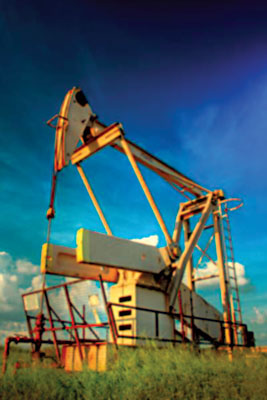All Nonfiction
- Bullying
- Books
- Academic
- Author Interviews
- Celebrity interviews
- College Articles
- College Essays
- Educator of the Year
- Heroes
- Interviews
- Memoir
- Personal Experience
- Sports
- Travel & Culture
All Opinions
- Bullying
- Current Events / Politics
- Discrimination
- Drugs / Alcohol / Smoking
- Entertainment / Celebrities
- Environment
- Love / Relationships
- Movies / Music / TV
- Pop Culture / Trends
- School / College
- Social Issues / Civics
- Spirituality / Religion
- Sports / Hobbies
All Hot Topics
- Bullying
- Community Service
- Environment
- Health
- Letters to the Editor
- Pride & Prejudice
- What Matters
- Back
Summer Guide
- Program Links
- Program Reviews
- Back
College Guide
- College Links
- College Reviews
- College Essays
- College Articles
- Back
Why the Alaskan Wilderness Should Be Economically Developed
As of now, the wilderness of Alaska is protected from economic development. While there are some good reasons for the wilderness been protected such as wildlife and the environment, I disagree with them protecting the entire wilderness. In this essay, we will explore why a part of the wilderness should be developed.
My first reason for why the wilderness should be developed is the fact that human population is increasing rapidly due to the death rate declining and the birth rate increasing. With the population increasing, resources will be used quicker. Researchers have kept track of the amount of freshwater in cubic metres since 1950 and put it in a bar chart and they have used their research to make a prediction on the amount of freshwater that’ll be available in 2050.
Alaska has many glaciers and ice caps which are inhabited and miles away from everyone living in the area, over 68% of freshwater is found in ice caps and glaciers (Mohan). As drinkable water is decreasing and human population is increasing, developing some glaciers in Alaska’s wilderness for a water source seems like it could temporarily solve the problem. Water isn’t the only resource Alaska is rich in compared to many other countries. Alaska has a large amount of oil, iron, and copper, as well as that, oil has now surpassed gold as the most sought-after resource ("Alaska's Heritage | Alaska History And Cultural Studies",).
Another reason for development in the wilderness is the economy. As I said earlier, Oil is by far Alaska’s most valuable resource. The Prudhoe Bay Oil Field is an oil field on Alaska’s north slope, it covers 213,543 acres of land and is the biggest oil field in North America. The field originally contained about twenty-five billion barrels worth of oil and it’s about double the biggest oil field in the US. This may seem like it’s good and a reason not to go and make another oil field in the wilderness, but, the oil supply despite being big won’t last forever. A barrel of oil in Alaska costs $65.75, it currently produces about six hundred thousand barrels per day and if you do the maths Alaska’s oil production is worth $39 450 000 per day. This shows how dependent the economy is on it when they run out of oil in the field their economy will decline very quickly unless they develop the wilderness to dig for oil or we find a suitable substitute for oil. In Alaska, there is 57 412 549 acres of land and over half of it is wilderness, meaning the wilderness can be developed with many acres to spare ("Prudhoe Bay Oil Field", "Crude Oil Price Today | WTI OIL PRICE CHART | OIL PRICE PER BARREL | Markets Insider","Wilderness Statistics Report").
While these are valid reasons and why I believe Alaska’s wilderness should be open to development, I do realise that it needs to be controlled. I believe there should be an acre limit of land to develop and you have to use that amount of land for a certain amount of years before you can get more land to develop, this will solve both the problem of lack of natural resources and development required to keep the economy running stably. In conclusion, I think that part of Alaska’s wilderness should be developed to collect some natural resources as well as saving the economy.
Works Cited
"Alaska's Heritage | Alaska History And Cultural Studies." Akhistorycourse. Web. 6 Mar. 2018.
"Crude Oil Price Today | WTI OIL PRICE CHART | OIL PRICE PER BARREL | Markets Insider." markets.businessinsider. Web. 6 Mar. 2018.
"Global Population And The Environment." ThoughtCo. Web. 6 Mar. 2018.
Mohan, Lindsey. "Earth's Freshwater." National Geographic Society. Web. 6 Mar. 2018.
PRB. Annual Renewable Freshwater Availability Per Capital, 1950, 1995, 2050. Web. 6 Mar. 2018.
"Prudhoe Bay Oil Field." En.wikipedia. Web. 6 Mar. 2018.
"Wilderness Statistics Report." Wilderness. N.p., 2017. Web. 12 Mar. 2018.

Similar Articles
JOIN THE DISCUSSION
This article has 0 comments.
